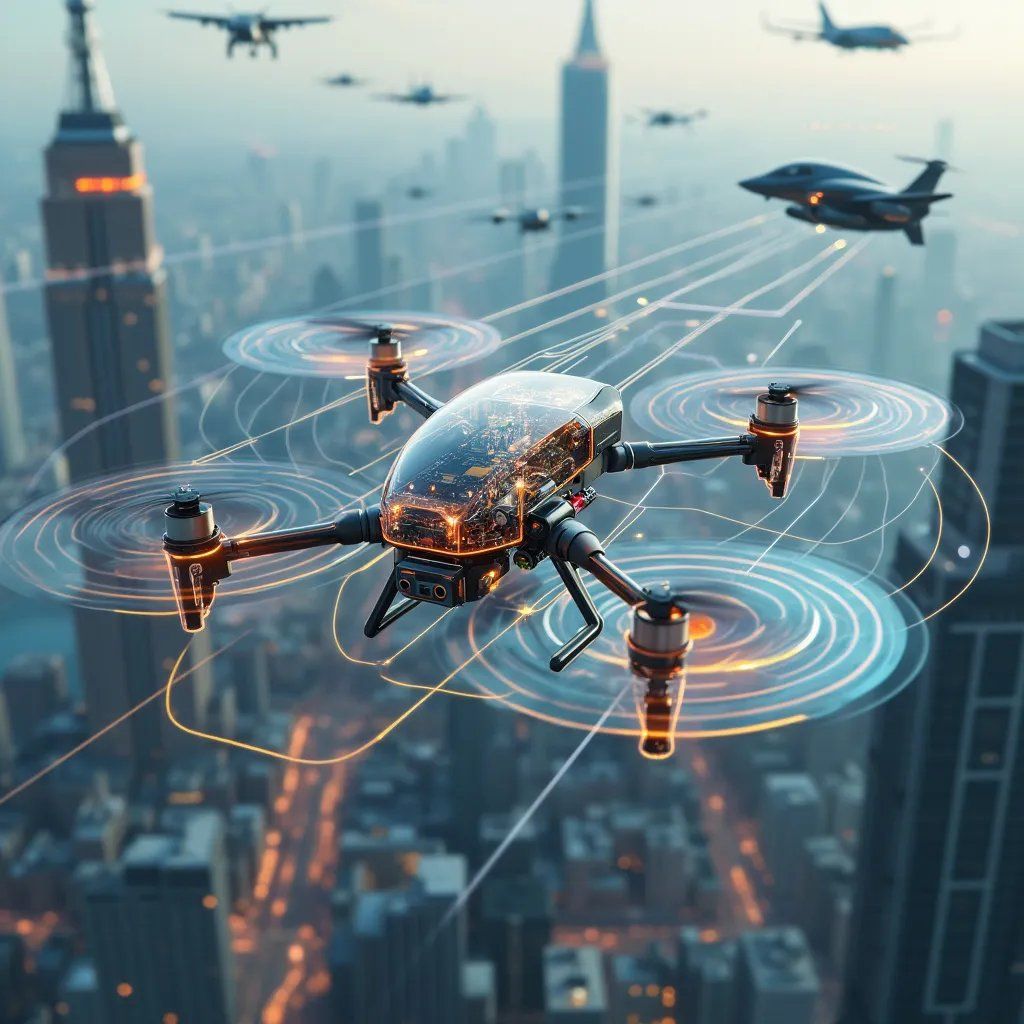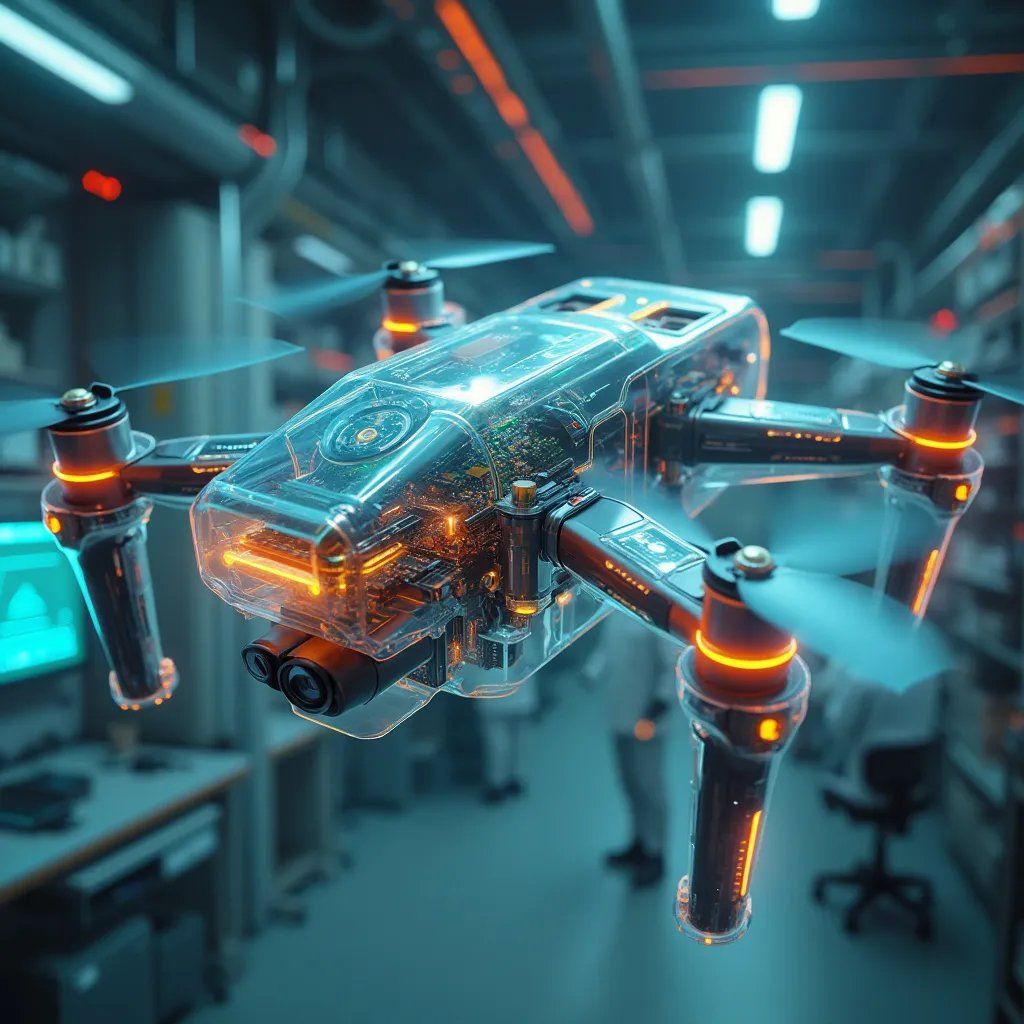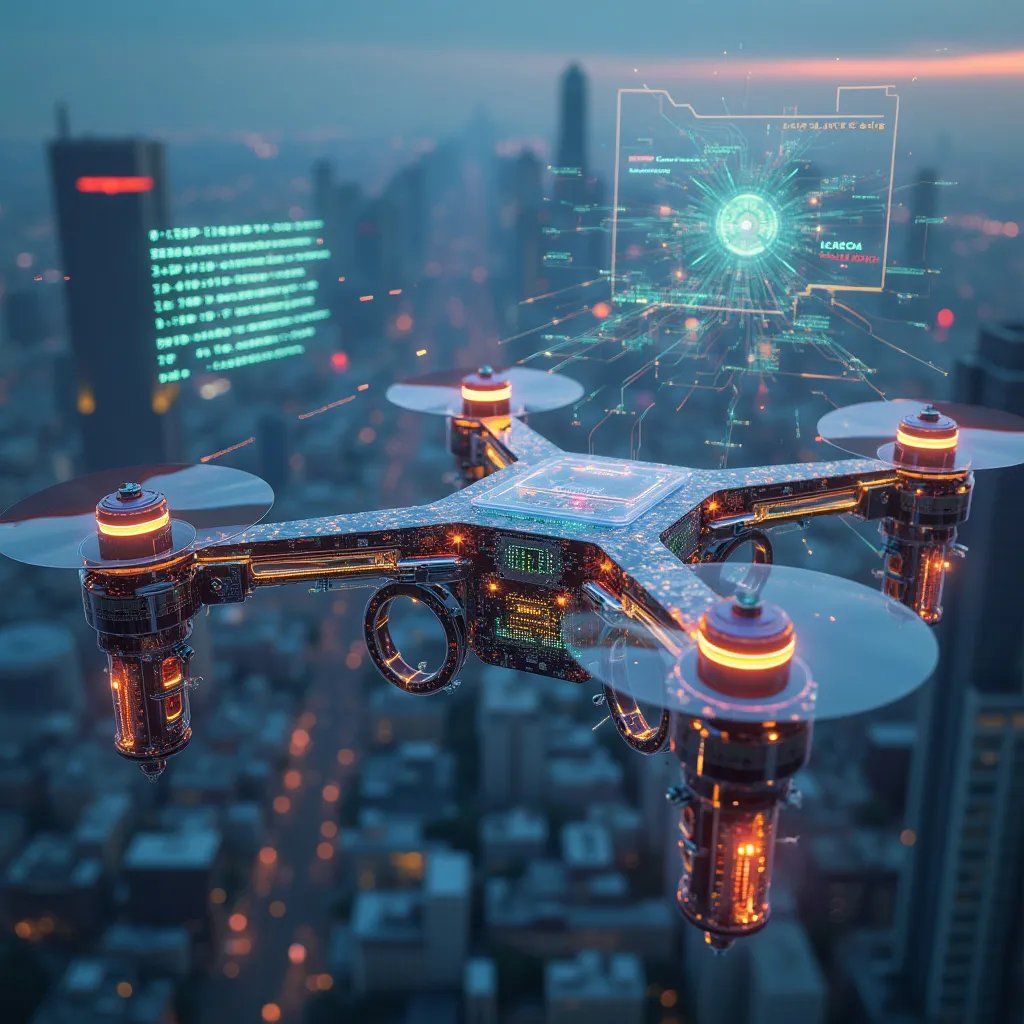Introduction
The integration of advanced Identification Friend or Foe (IFF) systems with existing hardware has become a critical challenge. At Decent Cybersecurity, our innovative DroneCrypt IFF system is at the forefront of addressing this challenge, offering a solution that seamlessly blends cutting-edge security with the diverse landscape of drone hardware.
This article explores the intricacies of integrating IFF systems with existing drone hardware, delving into the challenges, solutions, and future prospects of this crucial aspect of drone technology.
The Need for IFF Integration
The drone market has experienced explosive growth, with a wide variety of hardware already in use across multiple sectors. Integrating advanced IFF systems into this existing ecosystem is essential for several reasons:
- Enhanced Security: As drones become more prevalent in sensitive operations, robust identification systems are crucial.
- Regulatory Compliance: Evolving regulations often require advanced identification capabilities for drones.
- Interoperability: Integrated IFF systems enable drones to operate safely in shared airspaces.
- Cost-Effectiveness: Upgrading existing hardware is often more economical than complete replacement.
The DroneCrypt IFF Approach to Integration
At Decent Cybersecurity, our DroneCrypt IFF system has been designed with integration in mind. Key features include:
- Lightweight Client: With a footprint of less than 1MB, DroneCrypt IFF can be easily integrated into most existing drone systems without significant hardware upgrades.
- Low Power Consumption: Consuming less than 0.5W, our system minimizes the impact on drone power systems and flight time.
- Compatibility: Designed to be compatible with major drone operating systems like PX4 and ArduPilot.
- Flexible Architecture: Our system can be adapted to various hardware configurations, from small commercial drones to large military UAVs.
Technical Challenges in IFF Integration
Integrating IFF systems with existing drone hardware presents several technical challenges:
1. Hardware Diversity
The drone market encompasses a wide range of hardware configurations, from small consumer drones to large military UAVs. Each type may have different processing capabilities, power systems, and communication modules.
Solution: DroneCrypt IFF employs a modular architecture that can be tailored to different hardware profiles. For instance, our system can offload intensive computations to ground stations for less powerful drones while performing more operations on-board for advanced models.
2. Power Constraints
Many existing drones have limited power budgets, and adding an IFF system could potentially impact flight time.
Solution: Our system is optimized for low power consumption. Additionally, we implement power management techniques such as dynamic frequency scaling to adjust power usage based on operational needs.
3. Communication Protocols
Existing drones may use various communication protocols, which need to be compatible with the IFF system.
Solution: DroneCrypt IFF uses a custom, low-latency communication protocol based on MQTT, which can be adapted to work with different existing drone communication systems. Our protocol ensures end-to-end encryption while maintaining a typical latency of less than 50ms round-trip time.
4. Size and Weight Limitations
Especially for smaller drones, adding new hardware components can be challenging due to size and weight restrictions.
Solution: Our system is designed to be implemented primarily in software, with minimal hardware additions required. When hardware upgrades are necessary, we focus on compact, lightweight components.
Integration Process and Best Practices
Successfully integrating IFF systems with existing drone hardware requires a systematic approach. Here’s an overview of the process we follow at Decent Cybersecurity:
- Hardware Assessment: Thoroughly evaluate the existing drone hardware, including processing capabilities, power systems, and communication modules.
- Integration Planning: Develop a tailored integration plan based on the specific drone model and its intended use case.
- Software Integration: Implement the DroneCrypt IFF software, ensuring compatibility with the drone’s operating system and existing software stack.
- Hardware Upgrades (if necessary): If required, integrate additional hardware components, such as secure elements for cryptographic operations.
- Testing and Validation: Conduct comprehensive testing to ensure the IFF system functions correctly without impacting the drone’s core operations.
- Performance Optimization: Fine-tune the integrated system for optimal performance, balancing security with operational efficiency.
- Documentation and Training: Provide detailed documentation and training for operators to ensure effective use of the integrated IFF system.
Case Studies: Successful IFF Integrations
Military UAV Upgrade
In a recent project with a major defense contractor, we integrated DroneCrypt IFF into an existing fleet of military reconnaissance drones. The challenge was to enhance their identification capabilities without significant hardware modifications.
Solution: We implemented our lightweight client on the drones’ existing processors and utilized their secure communication channels. The integration resulted in a 99.999% uptime for the IFF system and enhanced the drones’ ability to operate in contested environments.
Commercial Drone Fleet Enhancement
A large logistics company approached us to upgrade their delivery drone fleet with advanced IFF capabilities to comply with new regulations.
Solution: We developed a custom integration package that included a small hardware module for enhanced cryptographic operations. The solution was seamlessly integrated with the drones’ existing flight controllers and communication systems, enabling secure identification without impacting payload capacity or flight time.
Emerging Technologies and Future Directions
The field of IFF integration is continuously evolving. Here are some exciting developments on the horizon:
1. Software-Defined Radio (SDR) Integration
SDR technology offers the potential for more flexible and adaptable IFF systems. Research by Sharma et al. (2023) demonstrates how SDR can be used to create multi-mode IFF systems that can adapt to different operational requirements and regulatory environments [1].
2. AI-Enhanced Integration
Artificial Intelligence is being leveraged to optimize IFF integration. For instance, machine learning algorithms can dynamically adjust IFF parameters based on the drone’s operational context, enhancing both security and efficiency [2].
3. Quantum-Resistant Cryptography
As quantum computing advances, integrating quantum-resistant cryptographic algorithms into IFF systems is becoming crucial. Our DroneCrypt IFF system already incorporates post-quantum algorithms like CRYSTALS-Kyber and Dilithium, future-proofing drone security.
4. Edge Computing for IFF
Edge computing architectures are being explored to enhance the capabilities of IFF systems while minimizing the computational load on the drone itself. This approach can enable more advanced threat detection and response mechanisms without significant hardware upgrades [3].
Regulatory Landscape and Compliance
Integrating IFF systems is not just a technical challenge but also a regulatory one. Key considerations include:
- Remote ID Regulations: Many jurisdictions are implementing remote ID requirements for drones. IFF systems need to be integrated in a way that complies with these regulations.
- Airspace Integration: As regulations for integrating drones into shared airspace evolve, IFF systems play a crucial role in ensuring compliance and safety.
- Data Privacy: IFF systems must be integrated in a way that respects data privacy regulations, particularly in civilian applications.
- International Standards: For drones operating across borders, IFF systems need to comply with international standards like those set by ICAO.
Conclusion: The Future of Integrated Drone Security
The integration of advanced IFF systems with existing drone hardware represents a critical frontier in UAV technology. As drones continue to play an increasingly important role in various sectors, from military operations to commercial applications, the need for robust, seamlessly integrated identification systems will only grow.
At Decent Cybersecurity, our DroneCrypt IFF system exemplifies the potential of modern IFF technology to enhance drone security without compromising performance or operational flexibility. By focusing on lightweight, adaptable solutions, we’re enabling drone operators to upgrade their existing fleets to meet the security challenges of today and tomorrow.
As we look to the future, the integration of IFF systems will likely become even more seamless, with advancements in software-defined radio, AI, and edge computing paving the way for more intelligent and adaptive identification systems. These developments will not only enhance security but also enable new capabilities and applications for drones across various industries.
The journey of integrating advanced security features into existing drone hardware is ongoing, and at Decent Cybersecurity, we’re committed to staying at the forefront of this exciting field. As drone technology continues to evolve, so too will our solutions, ensuring that the skies remain secure, efficient, and open to innovation.
References
[1] Sharma, V., & Kumar, R. (2023). Software-Defined Radio Approaches for Flexible IFF Integration in UAV Systems. IEEE Transactions on Aerospace and Electronic Systems, 59(4), 2890-2905.
[2] Zhang, L., Wang, Y., & Sun, X. (2022). AI-Driven Optimization of IFF Systems for Heterogeneous Drone Fleets. IEEE Internet of Things Journal, 9(18), 17688-17701.
[3] Liu, J., Wang, X., & Zhao, Y. (2023). Edge Computing Architectures for Enhanced Drone IFF Capabilities. IEEE Transactions on Network Science and Engineering, 10(2), 1123-1137.
[4] International Civil Aviation Organization. (2023). Standards and Recommended Practices for UAS Traffic Management. Montreal: ICAO.
[5] Federal Aviation Administration. (2023). Remote Identification of Unmanned Aircraft. Washington, D.C.: U.S. Department of Transportation.







